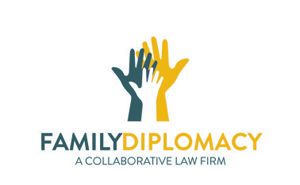Avoiding A Nasty Divorce in Tampa Bay
If things are not going well in your marriage, whatever the circumstances, you want to avoid a nasty divorce. You have probably seen how recriminations, dirty court tactics, and endless fighting have ruined friends and family. Heck, you may still be feeling the consequences of your parents’ nasty divorce. And you are looking to spare yourself and your family the same trauma.
Fortunately, there are alternatives. One growing alternative is Collaborative Divorce.
Working Together to Avoid a Nasty Divorce
In Collaborative Divorce, you and your spouse work together – outside of the court system – to find resolutions that work for your family. You and your spouse have separate lawyers for independent support, but the lawyers have one mission: find solutions. Collaborative Lawyers are unlike traditional lawyers in that the law prohibits them from fighting in court. This means that no time, energy, or money will be spent on frivolous lawsuits, opposition research, or damaging depositions.
Instead, Collaborative Lawyers encourage cooperation so you and your spouse can move on with your lives without harming your kids. Further, Collaborative Lawyers provide you with the independent legal advice you need to feel comfortable that you are making informed decisions.
Collaborative Facilitator
Oftentimes, a Collaborative Facilitator will be on your team. This person is a licensed professional with a specialty in communication, family dynamics, and/or childhood development. He or she helps you avoid a nasty divorce by focusing discussions on the future rather than the arguments of the past. If you have children, the Collaborative Facilitator will help you and your spouse create a parenting plan (a written document required by Florida law) that is developmentally tailored to your children’s needs. The Collaborative Facilitator can also provide you and your spouse tips on co-parenting, even when you are not getting along.
Because divorce tends to be such an emotional process, the Collaborative Facilitator will be an invaluable resource.
Financial Transparency
One central aspect of Collaborative Divorce is transparency. Especially when it comes to finances, it is important for you and your spouse to know what resources are available to the family. In most families, there is one spouse who has taken care of the family finances, and thus has most of the knowledge of assets and debts. To help provide balance and transparency, a neutral Collaborative Financial Professional is oftentimes utilized.
In traditional divorce, your lawyer and your spouse’s lawyer gather the family financial documents, separately, at separate lawyer hourly rates. Oftentimes traditional lawyers will use costly and adversarial “discovery tactics.” These include Requests for Production of Documents, Interrogatories, Requests for Admission, and Depositions to collect this information.
In contrast, in a Collaborative Divorce, the Financial Professional will work with both spouses to cost-effectively gather needed documents and information. If information appears to be missing, a Financial Professional can help identify the most efficient way to obtain it. The Financial Professional will then make sure to answer questions that either spouse has on the family finances. This is so each spouse can make informed decisions. Finally, the Financial Professional can help develop options on division of assets and debts and support that make sense for your family.
First Step To Avoiding a Nasty Divorce
If things are just not working out in your marriage, you have choices. Your first step is to contact a Collaborative Professional. Learn more about saving yourself and your family from a nasty divorce.
Adam B. Cordover is one of the most experienced Collaborative Lawyers in Tampa Bay. He is a member of the Boards of the International Academy of Collaborative Professionals and Florida Academy of Collaborative Professionals, and he is a former president of Next Generation Divorce. Adam is also co-author of an American Bar Association book on Collaborative Practice.





